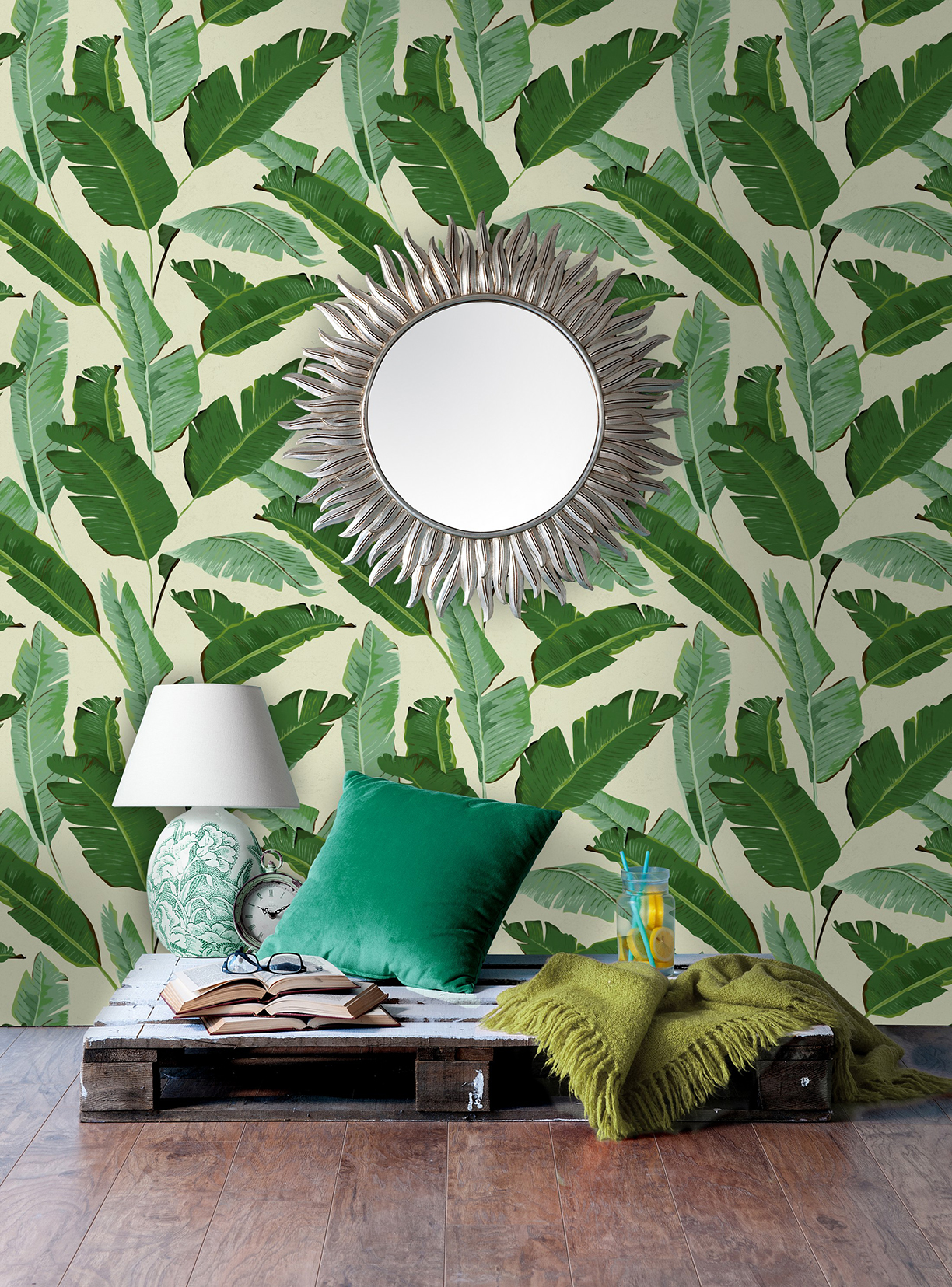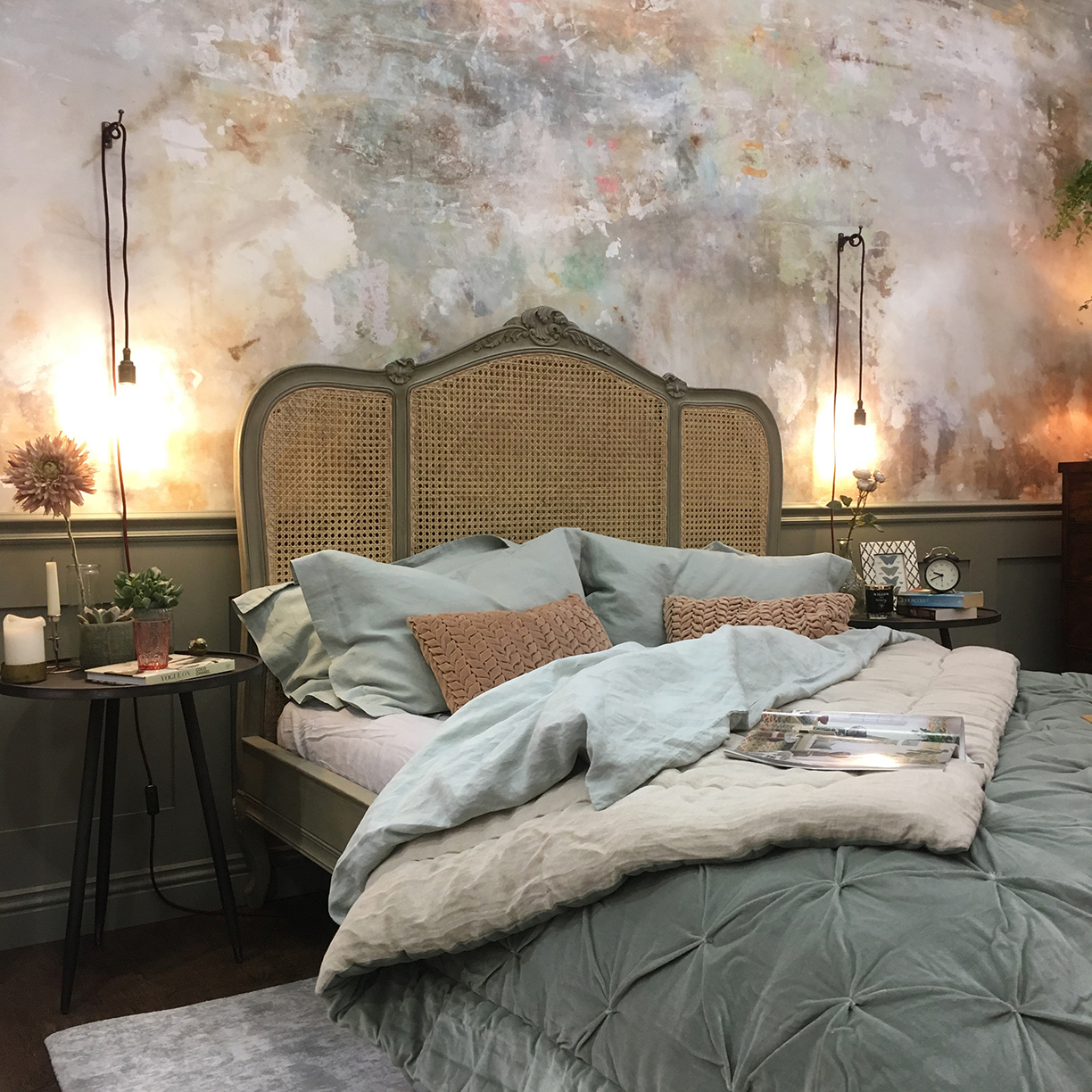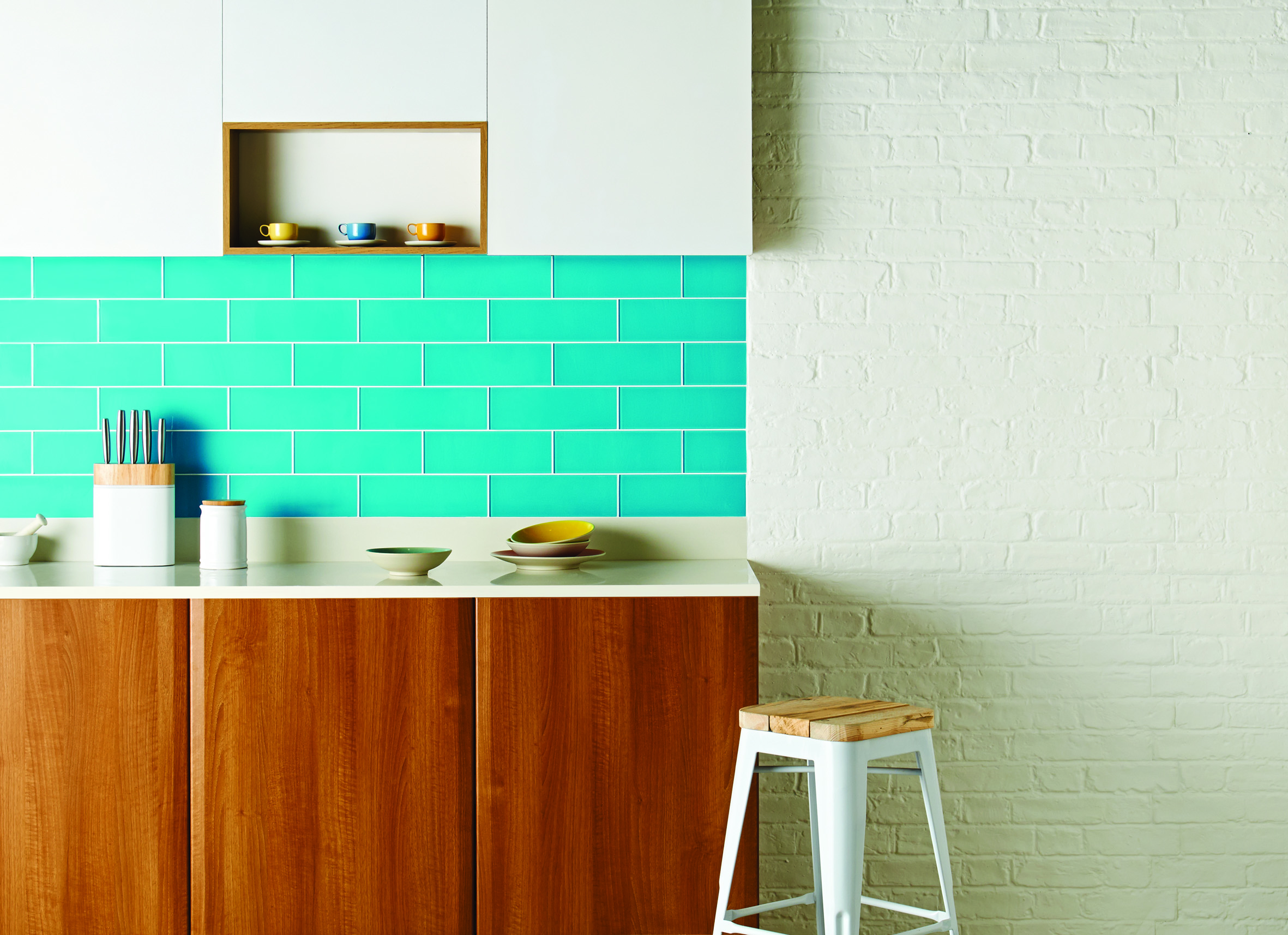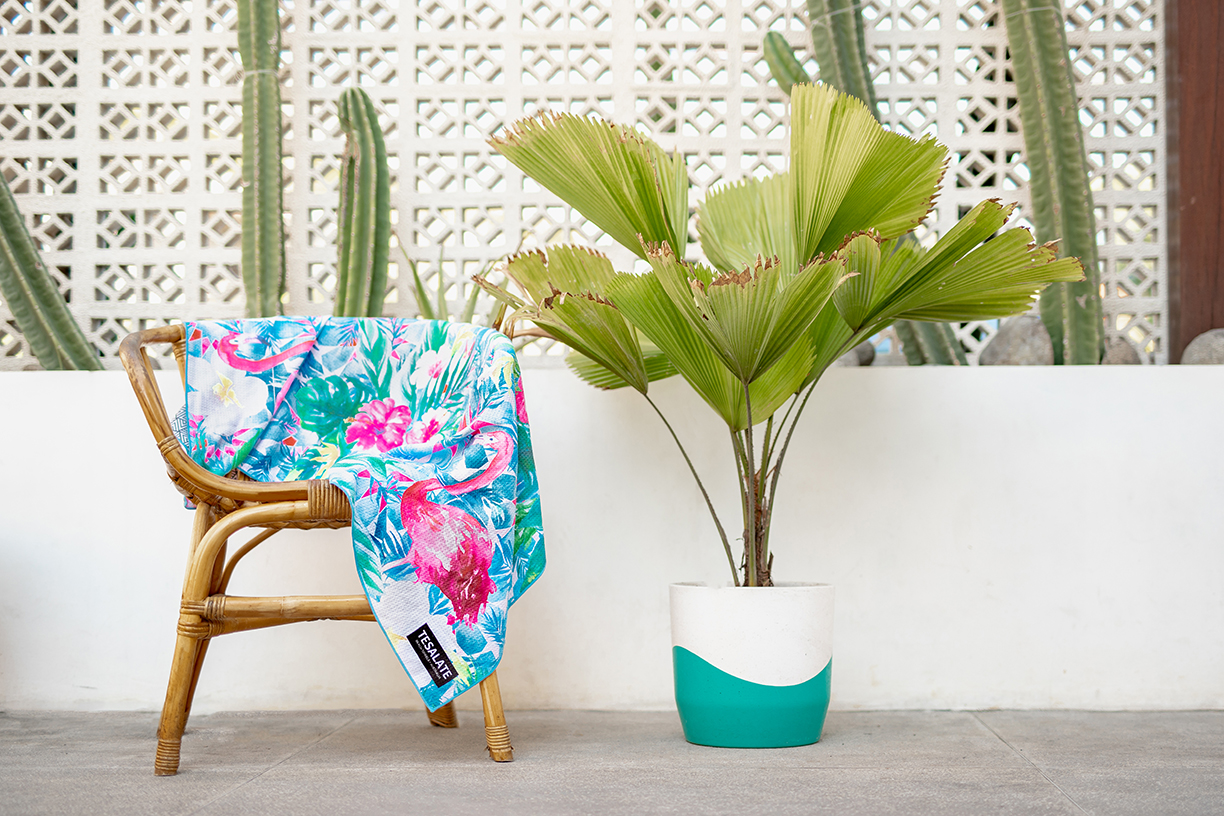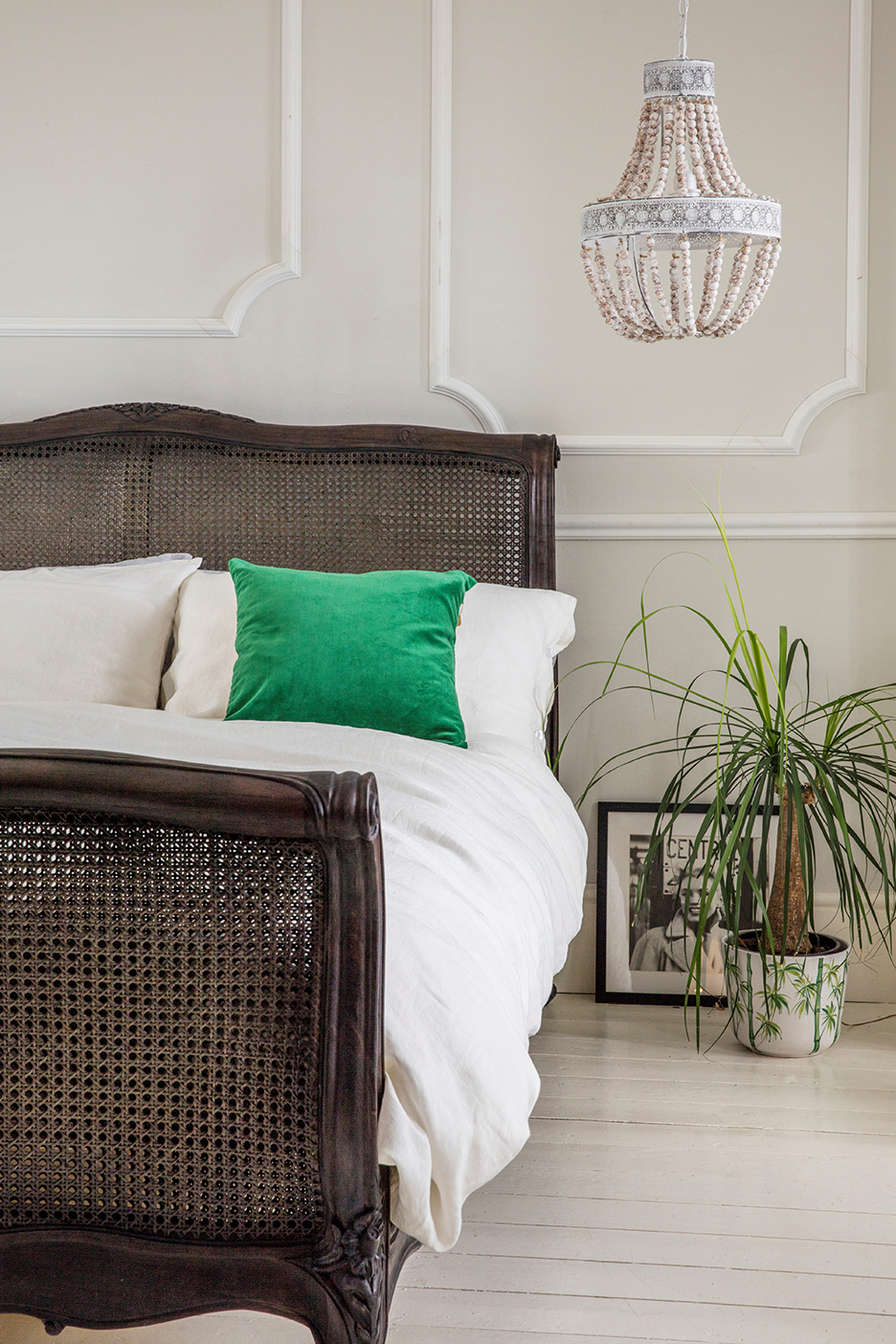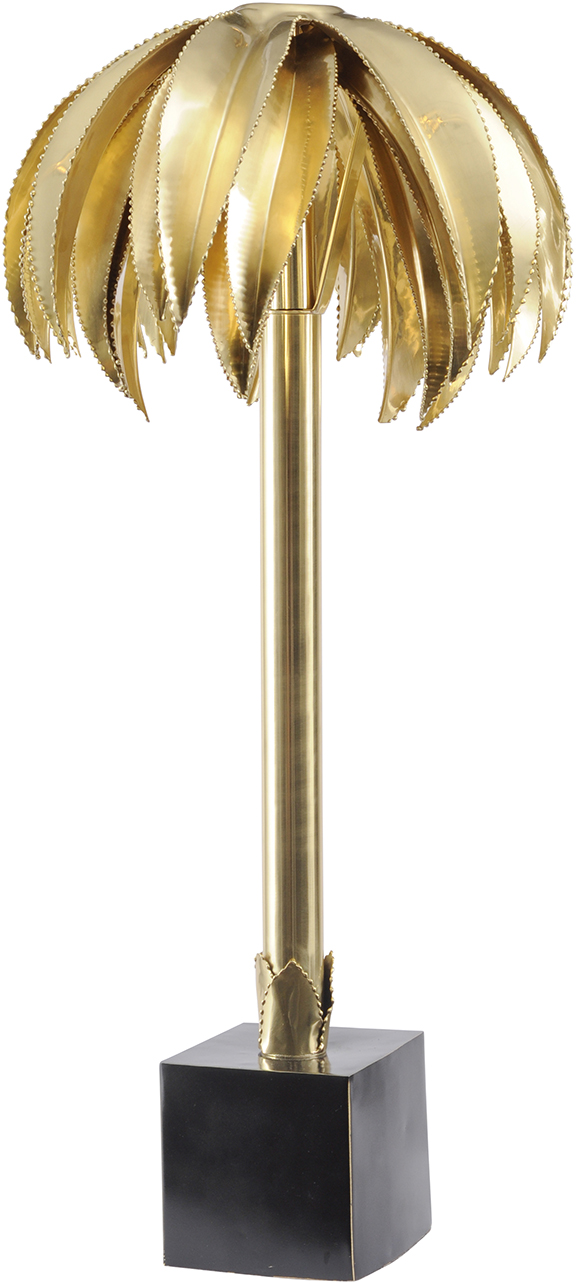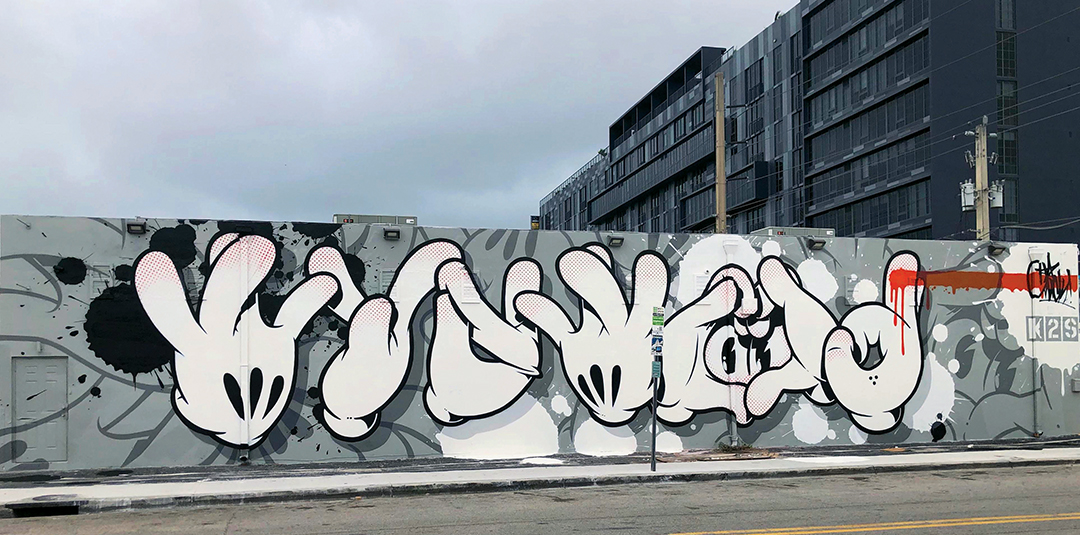
Slick, a native of Hawaii, painted this mural on the exterior of the Museum of Graffiti in Miami.
Photo courtesy Museum of Grafitti.
Its earliest practitioners were considered criminals, but now the work of some graffiti artists hangs in the nation’s most prestigious museums.
After society’s initial outrage over acts of vandalism in the name of creativity, art enthusiasts begrudgingly acknowledged that some wayward, urban painters were genuinely gifted. Over time, graffiti and street art earned a place in prestigious collections, private galleries and museums like the Museum of
Contemporary Art (MOCA) in Los Angeles and Whitney Museum of American Art in New York.
While graffiti is often viewed as an American-born genre, Michael Rooks, a curator of modern and contemporary art at Atlanta’s High Museum of Art, provides some historical context. “Graffiti and street art have their origins in the history of 20th century art — from Dada wherein text replaced image to inveigh against WWI on the streets of Zürich, to the Mexican muralist movement’s large-scale murals in post-revolution Mexico City, to Les Affichistes artists whose affiches lacérées (layers of torn posters and advertisements) were literally sourced from the streets and walls of post-WWII Paris.”
The evolution of American street art has been well documented in L.A. and New York, but the acceptance of this form of artistic expression has also occurred in Philadelphia, Miami, Chicago, and San Francisco.
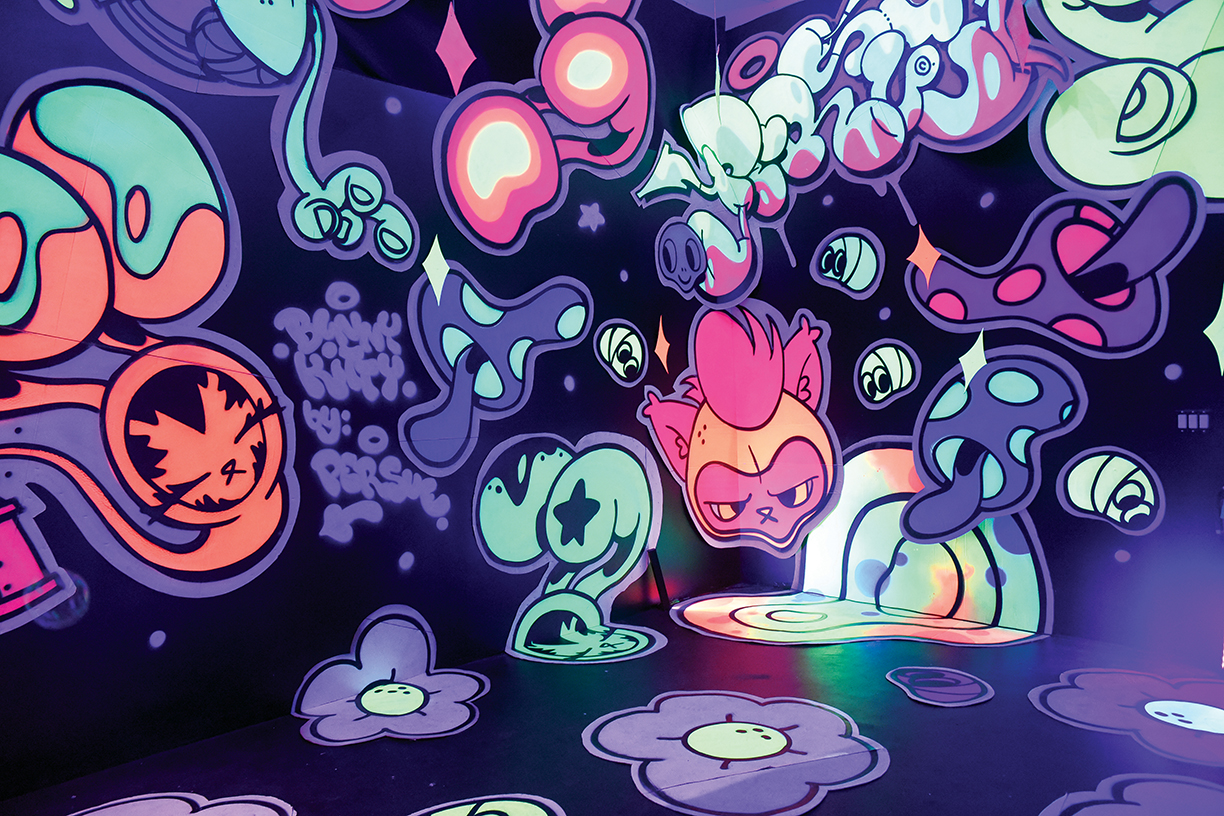
“Bunny Kitty’s Dreamstate Room” is a vibrant, playful work from artist Persue.
Photo courtesy Museum of Graffiti.
Some street artists are commissioned as muralists, a transition that monetizes and legitimizes their work, before eventually being discovered by curators. Ultimately, gallery representation leads to their art appearing in chic restaurants, hotels and private collections. Artists like Keith Haring, Jean-Michel Basquiat and Shepard Fairey — all once confined to the fringes of the art world — became creative celebrities. In L.A., the exclusive fashion boutique of Elyse Walker features artwork by RETNA, one of the most prominent local street artists, while superchef David Chang hangs the work of David Choe in Majordomo, his popular downtown restaurant. The city’s Mayfair Hotel features the work of a different street artist on every floor — resulting in diverse visual experiences for guests — and is a tribute to the depth of talent in the region.
The historic Mayfair, site of the first post-Academy Awards party in 1929, has been transformed into a trendy setting showcasing street art, curated by artist-in-residence Kelly “RISK” Graval. The Louisiana-born artist became one of L.A.’s most influential graffiti stylists and was among the pioneering artists to transition from the street to the gallery, as well as entering the worlds of fashion design and music video.
RISK’s own work is represented by a Buddha-inspired installation on the second floor and one of his murals will eventually soar above the 15th-floor pool deck. “I selected my “Metallic Tissue” series, which consists of a body of work that I paint on panels built out of repurposed spray cans,” reports RISK, who states, “They’re my imprint on society as an artist, my DNA.” He also installed some of his unique neon work in the lobby, which suits the vintage of the building. Overall, nearly 100 pieces throughout the hotel represent the diversity of L.A.-based graffiti artists and muralists like DEFER, Billy Morrison and Shepard Fairey, whose breakout work was the Barack Obama “Hope” imagery from the 2008 presidential campaign.
“There was a time when graffiti artists were a small underground subculture,” explains RISK, but adds, “The powerfully dynamic art sparked a younger generation and it exploded.” He acknowledges that street art festivals and museum exhibits helped elevate the genre within the polite corridors of the art world, but that true recognition has been stubborn.
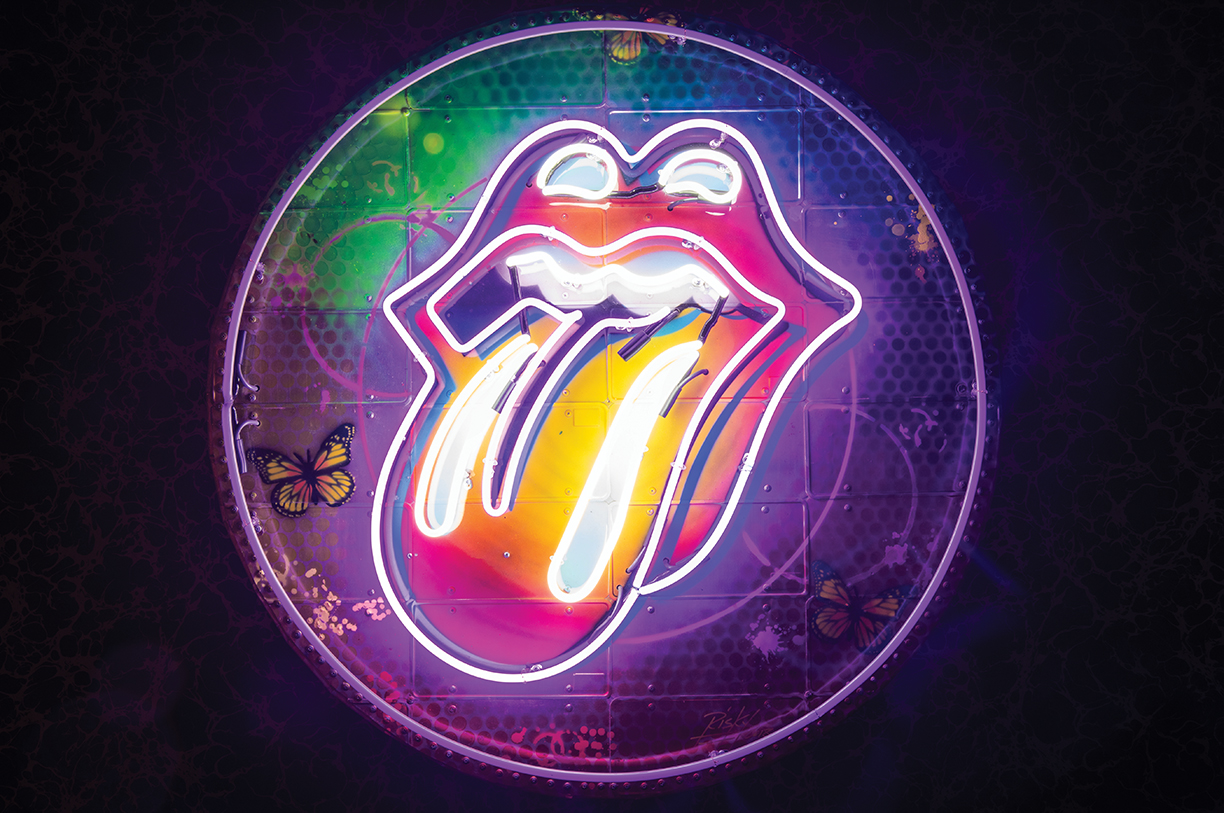
Neon work from RISK, the artist-in-residence at The Mayfair Hotel in L.A. Photo courtesy the Mayfair Hotel.
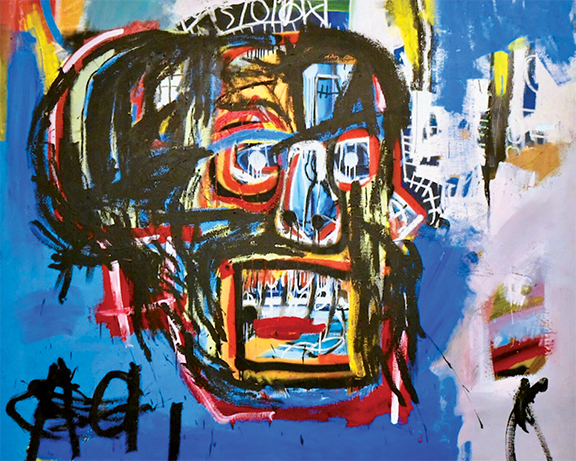
This untitled painting of artist Jean-Michel Basquiat sold for $110.5 million at auction. Photo courtesy Museum of Graffiti.
“It was time for a new generation to take over. The old guard and practices of art began to change,” insists RISK, who suggests progressive hoteliers are helping idiosyncratic artists to find an audience. “Hotel art was becoming stale, kind of like Muzak in elevators in the ’80s, and needed a new approach,” says the veteran artist. “Boutique hotels like The Mayfair are ahead of the curve and breathe fresh air into an exciting future for art, artists, and art enthusiasts,” says RISK.
Roger Gastman, an urban anthropologist and historian, is a leading authority on street art who counts The History of American Graffiti and Street World: Urban Art and Culture from Five Continents among his 50 books. Gastman remembers his own discovery of self-expression — through a spray paint can in the early 1990s — as a defining moment in his young life.
Gastman, whose first book, Free Agents: A History of Washington, D.C. Graffiti, documented the local culture he experienced in his youth, reports there is a distinction between graffiti and street art. “Graffiti is very name-based, very ego-driven, while street art is more image-based and involves additional tools and techniques,” says Gastman, but notes that both have their roots in vandalism. “Street art is a safer name and is more digestible to the public, but graffiti and street art are kissing cousins on the same playing field,” he muses.
“So much of this work is fantastic and deserves to be seen in a different light, collected and respected,” says Gastman, who laments, “A majority of galleries and museums still don’t accept this kind of art, look at it seriously or believe it should be shown.” Demographics, however, are driving attitudes, suggests Gastman. “People in their 30s and 40s grew up with graffiti, tattooing and skateboarding — it’s everywhere, in fashion, music and advertising — and it resonates with them.”
Last year, Gastman spearheaded the New York edition of Beyond the Streets, a massive 100,000-square-foot exhibition of prominent graffiti artists in Brooklyn, following a similar event in L.A. in 2018. “We basically built our own museum and 200,000 people walked through the doors,” he explains, adding, “It showcased graffiti and street artists, giving them respect and presenting their history in the proper light.”
Miami, whose Wynwood Arts District is defined by vibrant, multicultural murals, is a city with a strong tradition of street art, and its Museum of Graffiti pays homage to the approachable medium. Museum co-founder Allison Freidin explains, “Our goal is to celebrate a group of artists previously marginalized because of the stigma associated with graffiti,” and reports the Miami institution is the only one in the world exclusively dedicated to graffiti art. “Previously, there was no place to learn about these artists,” she adds.
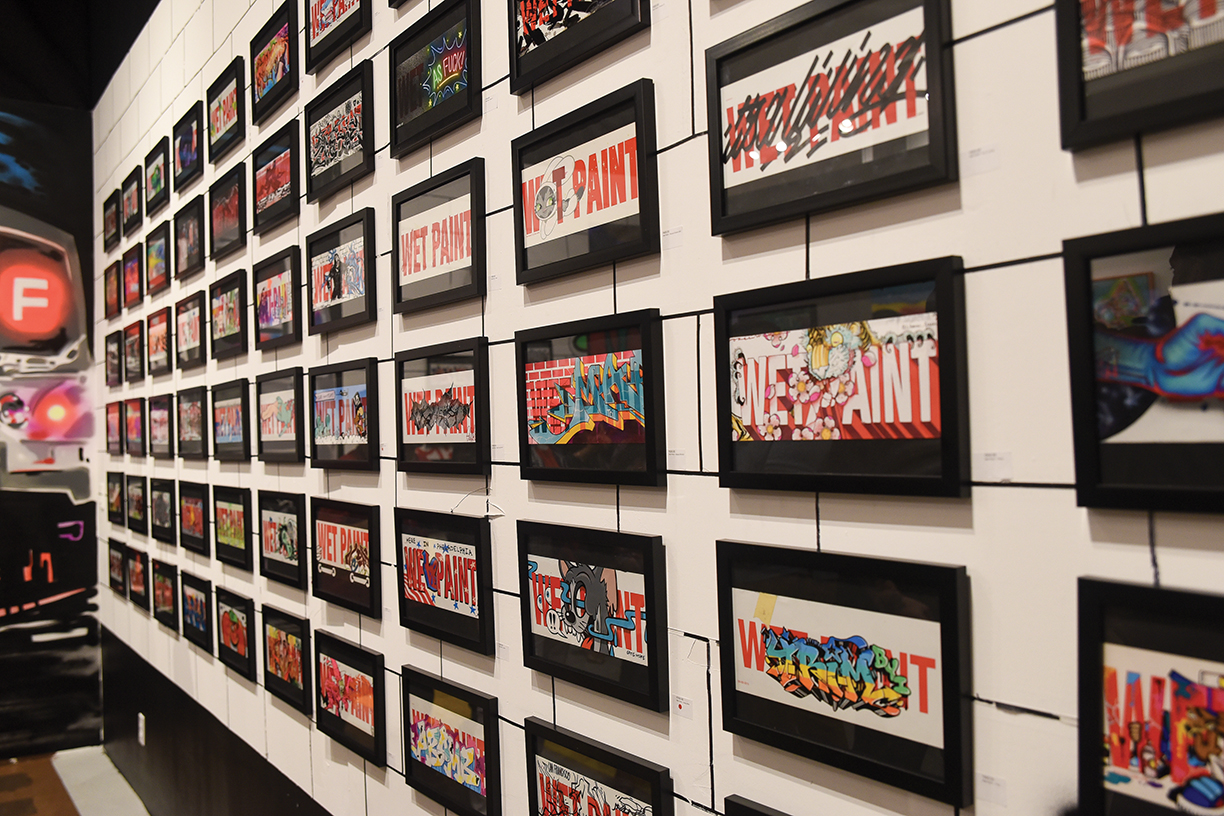
Above: The “Wet Paint” exhibit at the Museum of Graffiti in Miami, from artist Persue. Photo courtesy Museum of Graffiti.
At Right: “Party Felix” by Seen, one of many artists showcased at L.A.’s Mayfair Hotel. Photo courtesy the Mayfair Hotel.
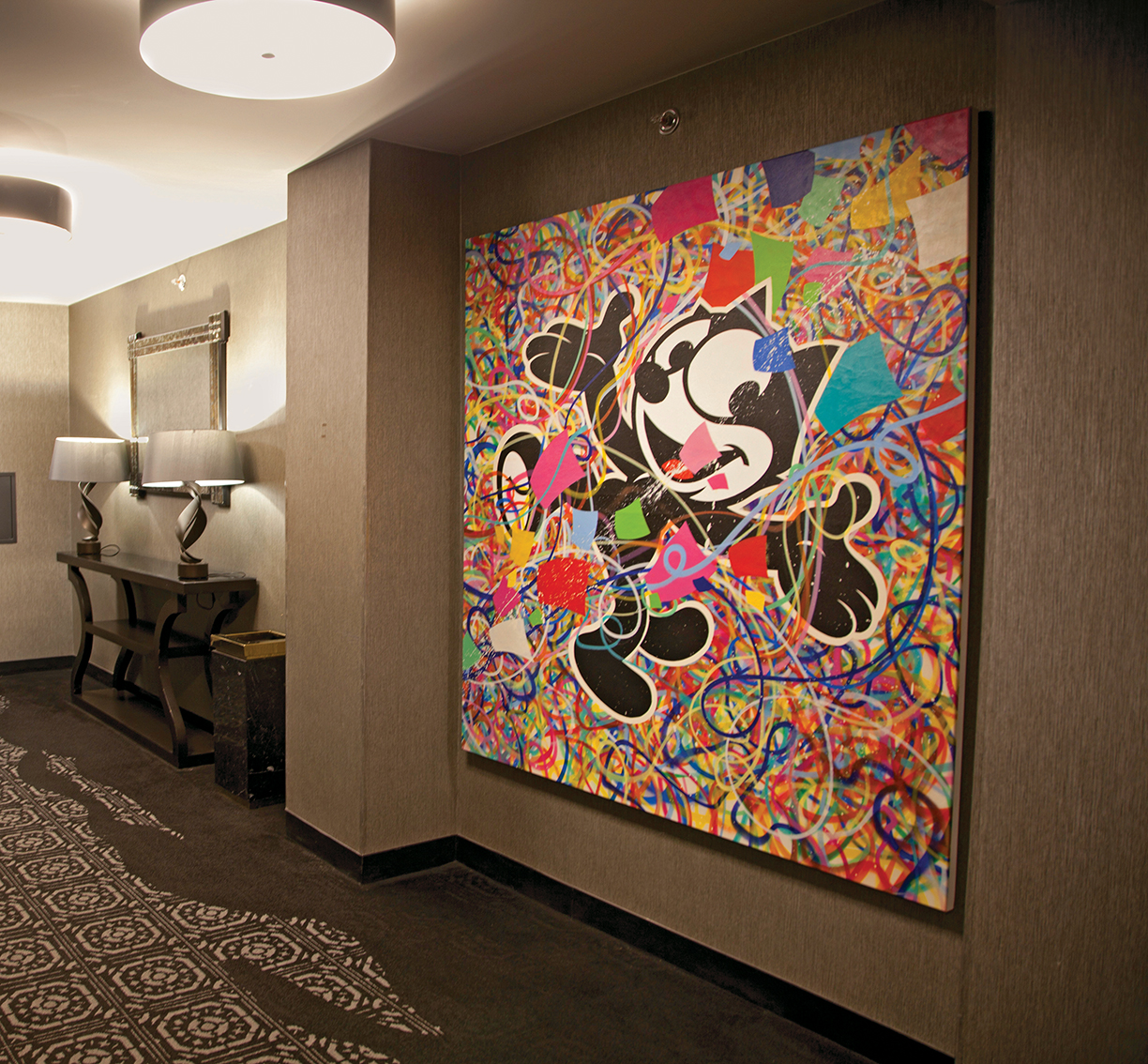
Explaining its location in a former shoe warehouse in Wynwood, Freidin reports, “The district’s relevance in the past 10 years is a product of the graffiti art that transformed a sleepy industrial neighborhood into the world-class arts destination it has become,” noting the windowless warehouses made ideal canvases for street artists. The Museum of Graffiti’s own building is entirely wrapped in 14 different murals by acclaimed local and international artists like Shoe, EZO and Abstrk.
The museum’s interior galleries feature rotating exhibits such as a recent compelling vignette from artist Persue, who famously removed the “Wet Paint” signs that New York City transit workers used to tape to subway cars after painting over graffiti art. Persue sent more than 70 of those very placards to artists around the world to use as canvases, all of which were incorporated into an exhibit whose physical design resembled a New York subway station platform.
Freidin explains that Miami’s graffiti art movement began in the early 1980s when some youth who got into trouble in New York were sent to South Florida to live with grandmothers or aunts. Insisting there is no way to repress the energies of an artist, Freidin reports, “The art erupted like a vengeance.”
The museum co-founder applauds the success of local graffiti artists like José Parlá, whose work moved from the streets of Miami to a mural inside Manhattan’s One World Trade Center, as well as multiple museum exhibitions and commissions in Tokyo, London and Havana. “He was immensely talented and continued to put in the work despite the stigma associated with graffiti art as vandalism,” says Freidin, who adds, “He’s probably one of the biggest names in contemporary art in the world.”
It was not easy for some museum curators to persuade their boards of directors that people previously labeled as vandals should be showcased in world-class fine arts facilities, but Freidin maintains society has evolved. She offers the former criminalization of marijuana as an analogy, citing its progression from disdain to broad acceptance. “It takes forward-thinking arts enthusiasts to take a risk,” and reports major corporations are hiring these artists as creative directors. “They recognize the power of this art,” says Freidin.
Robert Michael Provenzano, professionally known as CES, is a leading graffiti stylist whose signature aesthetic is now influencing the generation of artists currently emerging from the streets. His art, which began almost 40 years ago in his native Bronx, repeatedly got him into trouble as a young man, but after being flown to Munich to demonstrate his craft at a museum he realized there was a market for his skills. “My friends and I used to have to steal supplies, but now I’m a sponsored artist by a paint company in Barcelona,” says CES of how attitudes toward graffiti art have changed.
CES has since earned commissions from Nike and Palms Casino Resort in Las Vegas, in addition to collaborating on a mural adjacent to Miami’s Museum of Graffiti, where he was recently headlined. He finds it ironic that the artistic expression that was so strongly discouraged when he was a teenager is now a source of pride for his family. “I had no idea that if I stuck with it all those years, the whole world was gonna dig it,” reports CES.
The High Museum’s Michael Rooks notes, “The migration of some graf artists into the mainstream via museum collections and exhibitions underscores a familiarity with the language of the street that is widely recognized among urban audiences, as well as the influential role it has on global visual culture today.” He adds, “A fulcrum point in the migration from the street to the museum has to do with an artist’s knowledge and understanding of this legacy and ability to speak with urgency and artistry to contemporaneity.”
The ultimate measure of acceptance of art is the monetary value it commands in the marketplace. In 2017, an untitled work of Jean-Michel Basquiat, who began his career spray-painting walls in Lower Manhattan, sold for $110.5 million to a Japanese billionaire at auction, eclipsing his own personal record of $57.3 million.
Cuba’s capital, Havana, is celebrating its 500th year anniversary in November this year, a legacy that has led to a delightful cultural atmosphere, one that has drifted into the design sector. The style of Havana decor is a wonderful, bright and fun, as well as easy to replicate with a few simple touches. Here are some key trends that easily bring Cuban decor into your home.
Cuban decor is nostalgic and charming — a trend that is likely here to stay. With a few easy touches, a room can be transformed into a bright and fun haven to enjoy a mojito in as if you were in Havana!
Artist Concetta Antico sees the world in 100 million colors.
Concetta Antico sits down for lunch at a local cafe, after settling on smoked salmon and a strawberry salad. Before eating, she takes a moment to acknowledge the array of color in front of her: the blue-violet of the salmon, the thousands of reds bouncing around the strawberry and the light turquoise surrounding the seeds. “I promise you, I am not high!” she says, “I just truly see what I am looking at.”

Super Vision Mutation 12 X 16

Persephones Peacock in the Garden of Paradise 8 X 36
Better known as “The Color Queen,” Antico sees pinks, blues and violets in the green grass, an array of colors glistening off the white snow, and hundreds upon hundreds of colors within a rainbow. And they’re not just a figment of her imagination: her rare, genetic gift of heightened sight allows her to see almost 100 million more colors than what meets the average human eye.
In addition to being an artist, teacher, and color consultant, Antico is what scientists call a “tetrachromat,” meaning Antico’s eyes contain a rare genotype that provides a fourth receptor as opposed to the usual three, more common in women than men. With this, Antico’s tetrachromatic potential reaches up to 100 million colors, 10 times more than the average 1 million.
For now, Antico is the only authenticated tetrachromat artist on Earth, with 1,000 internationally acclaimed pieces of art and features in Reader’s Digest, Vogue, New York Magazine, and more.
Antico is originally from Australia, and was drawn toward art and color at a very young age. At age 8, her mother recognized her potential to become a famous artist, constantly showing support for Antico’s art. At age 16, she left home to cope with her mother’s passing, winding up in Los Angeles.
“I am a bit of an adventurer,” she says, “Sydney got too small for me. I was heading to work in Canada, I stopped in L.A., and it entranced me.”
Despite her hardships, she always kept her deep passion for art at the forefront of her life and career. Antico knew she was meant to paint professionally, and so she began teaching in San Diego, ultimately instructing 25,000 budding artists in oil painting.
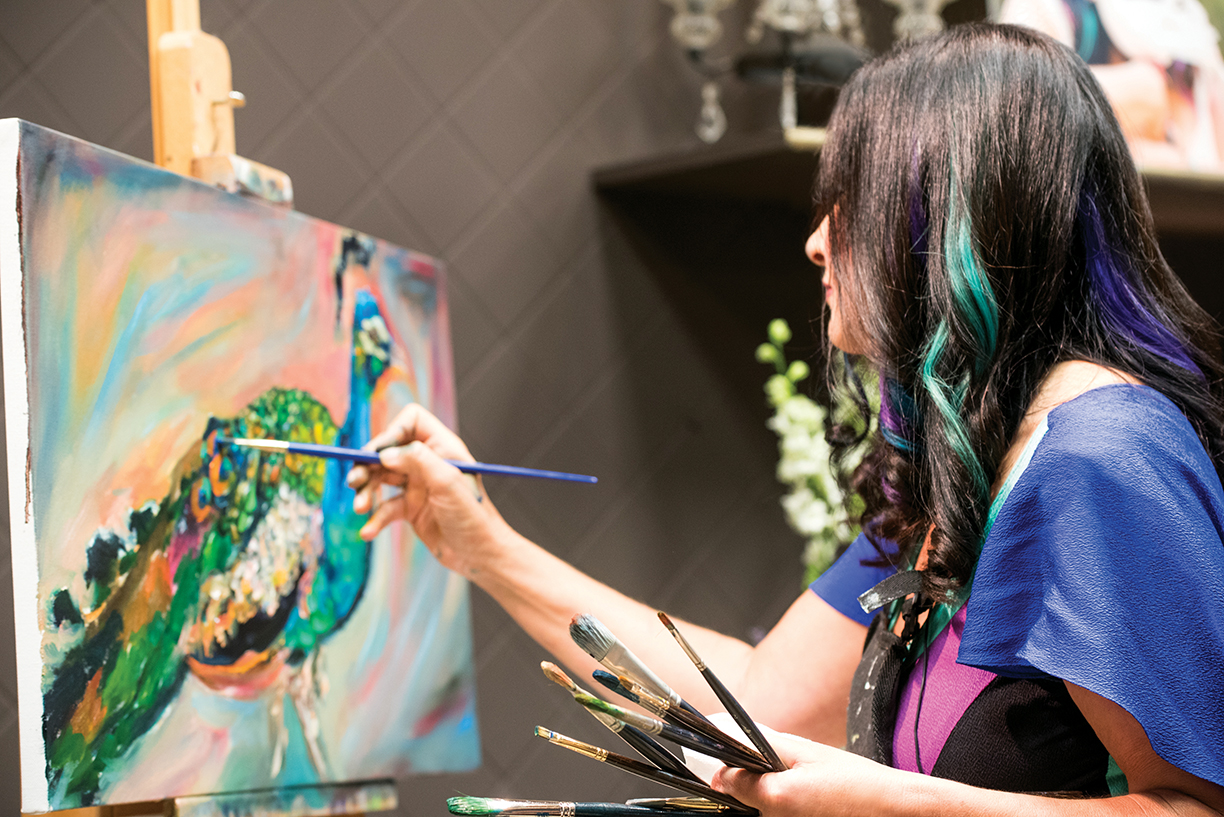
Artist Concetta Antico works on a piece named Iridescent Eyes… Charlie The Peacock 18 X 36
“Oil painting makes you healthier, and if we surround ourselves with beauty and happy spirits, we will be in a constant state of color euphoria.”
While teaching, Antico would point out the colors she sees in everyday objects and receive mixed reactions from her students. She says, “My students would tell me, ‘We don’t see that color that you see!’ I’d be confused, but then I educated my students to see a little more color.”
It wasn’t until a buyer of Antico’s, who happened to be a scientist, realized Antico could be a tetrachromat. Then, she began to understand her ability to see millions of colors. “I always thought I was different and unique,” says Antico. “The way I do things, what compels me, the way I painted … I didn’t realize that I could see and create colors like a computer.”
In late 2012, Antico was evaluated both genetically and behaviorally by Jay Neitz, Ph.D., a world-renowned leader in color vision. She soon discovered she was in fact a tetrachromat, and possessed an incredible genetic gift that affects only 2 to 3 percent of the world’s population.
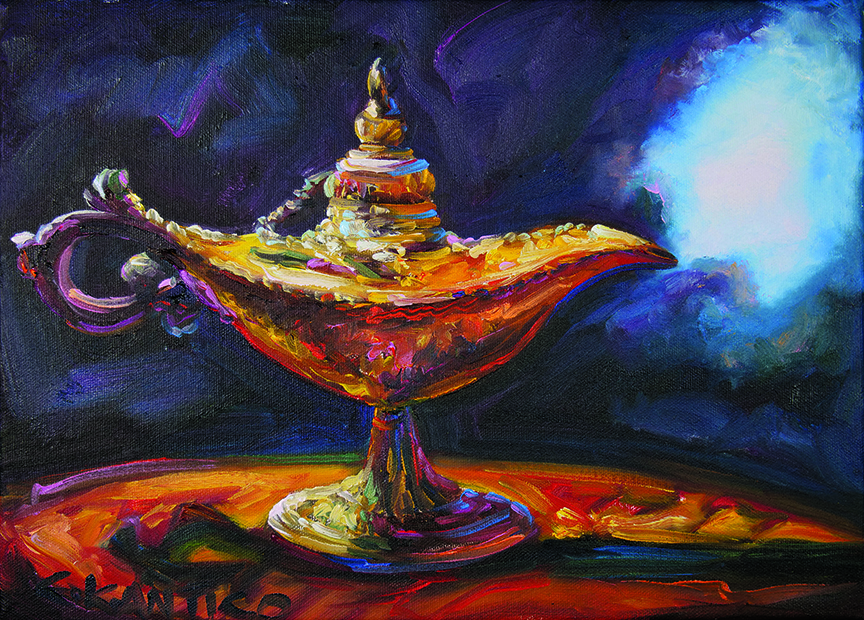
Who’s Your Genie 10 X 14
“It was just another part of the uniqueness of Concetta,” she says. “The gift is made up of my mother, her vision for me, how she put red and blue lights in the swimming pool to make lilac light, my high school that was big on art, my genetics, my brain, and my own passion, ambition and drive.”
Today, Antico wants to use her gift to make the world a better place, truly treasuring the world around her. In an interview with Stanford University, Antico said that, “enhanced color created enhanced joy.” She is constantly happy and joyful, happy to wake up and see trees and sun.
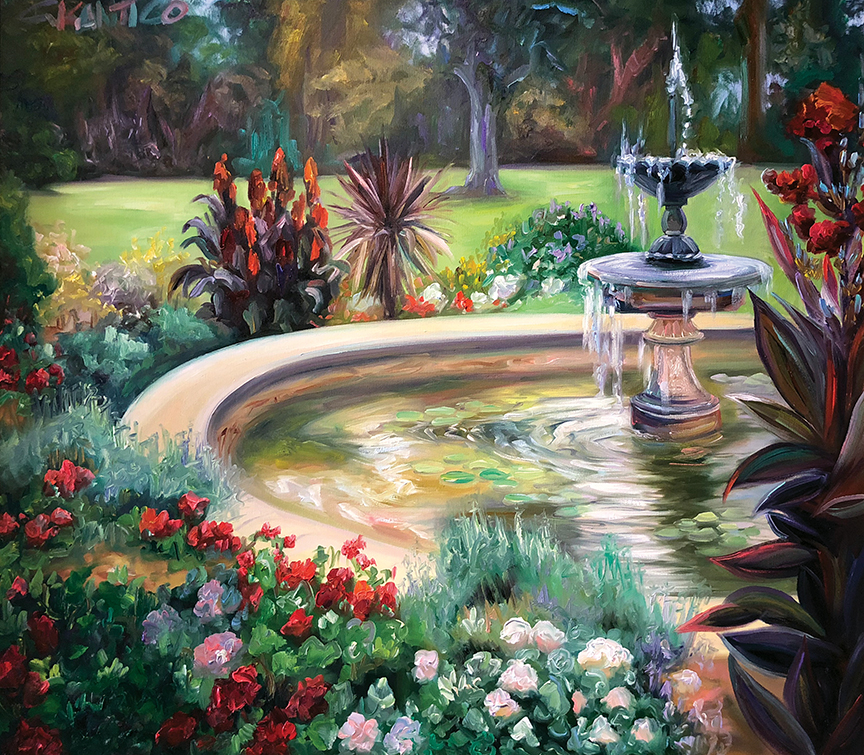
Reflecting Pool of Narcissistic Love-Vaucluse House-Sydney 30 X 36

“Oil painting makes you healthier, and if we surround ourselves with beauty and happy spirits, we will be in a constant state of color euphoria,” she says. “My gift makes me so excited to paint, look, share. Color has made me joyful, and has only enhanced my life. There are no disadvantages to beauty and color.”
Antico has a wide range of muses, as she aims to paint whatever captivates and moves her. Her paintings are divided into two categories: “earthly delights,” which encompasses everything on earth that she paints, and “otherworldly wonders,” which includes galaxies, magic and more. She often leans toward the ethereal subjects such as mystic skies and otherworldly galaxies. “Not people, though. We’re just not that attractive,” she jokes.
For those with normal sight, a place like a grocery store or a highway are simply as they seem. But for Antico, she is able to see past the veil and see further into the typical. “I’m captivated with the sky and trees beyond the freeway. I’m hyper-focused on beauty around me.” Sunsets, for example, are a religious experience for Antico, with the amount of splendor and color that they produce. “I am very blessed. I wake up every day and am so elated to see what I see and do what I do,” she says.
One of Antico’s main beliefs is that everyone has gifts, not just her, and that they should all be used to better our world. “Media can be dark, and we need light,” she says. “I want to use my platform for that. I have a place as ‘The Color Queen,’ and I feel that I can make people see their worlds differently.”

Conjuring Crystal Ball Colors 18 X 24
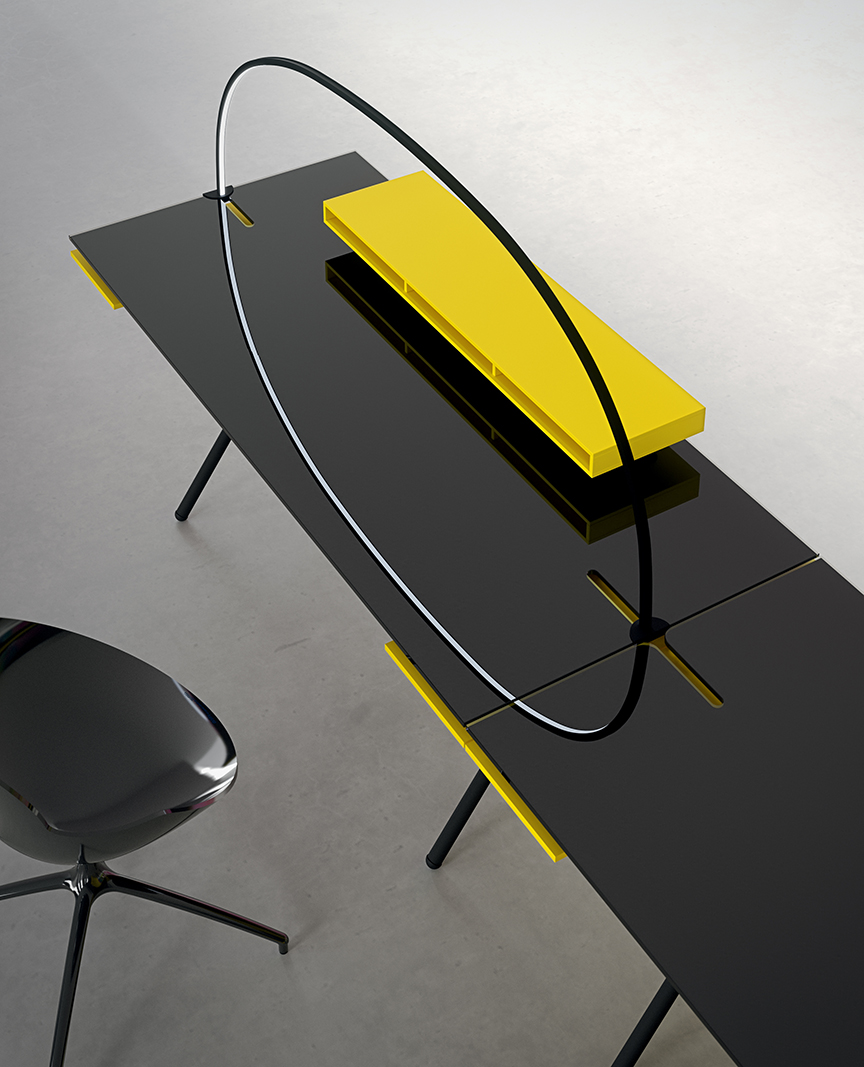
A new line of pop art furniture will brighten your office space.
A result of the extravagant, colorful and recognizable signature of designer Karim Rashid, Hook is the newest collection of modular furnishings by Newform Ufficio designed to instill positivity in the workplace.
“The office space should be comfortable and give inspiration like home, only with less distraction,” says Rashid. “An office should give a sense of freedom, personalization and sharing at the same time.” To reflect these ideals, Rashid’s collection incorporates touches of color, pop art work and simple divisions that create a private environment in line with the parameters of the common work space, making small workrooms obsolete.
The desks are the nerve center of the collection around which all the elements are developed. Each desk can be customized in terms of finishes and colors, and can also include a second, entire or shelf-sized top to store files, small books and/or hide cables. Under the worktop it is possible to insert a second, entire or shelf-sized top, to place diaries, documents or files, but the space also useful for managing and hiding cables. There are also drawers, special modules to insert hard drives, shelf systems and small load bearing shelves to replace thin metal legs. To free the tables from any unnecessary clutter, Rashid and Newform Ufficio have created LED lamps that spread a pleasant ambient light of the entire length of the desk.
To create workstations made up of several desks, a series of translucent screens and side panels allow both privacy and collaboration, as well as open up the space between workspaces. “I believe that the fluid, clean and bright spaces promote an active working life and that an office of this kind will lead to a better and more gritty work in return. My collection for Newform Ufficio embodies this spirit,” Rashid adds.
“Design has been the cultural shaper of our world from the start,” he notes. “We have designed systems, cities and commodities…. Now design is not about solving problems, but about a rigorous beautification of our built environments. Design is about the betterment of our lives poetically, aesthetically, experientially, sensorially, and emotionally.”
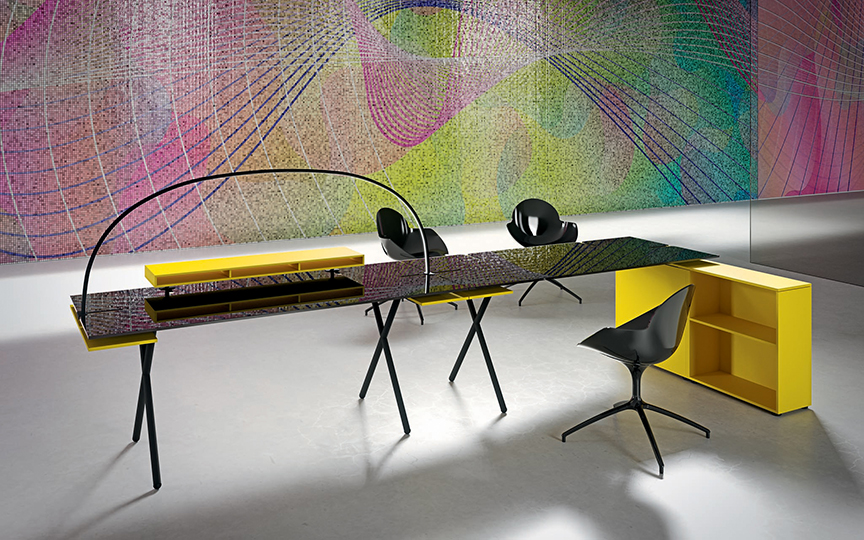
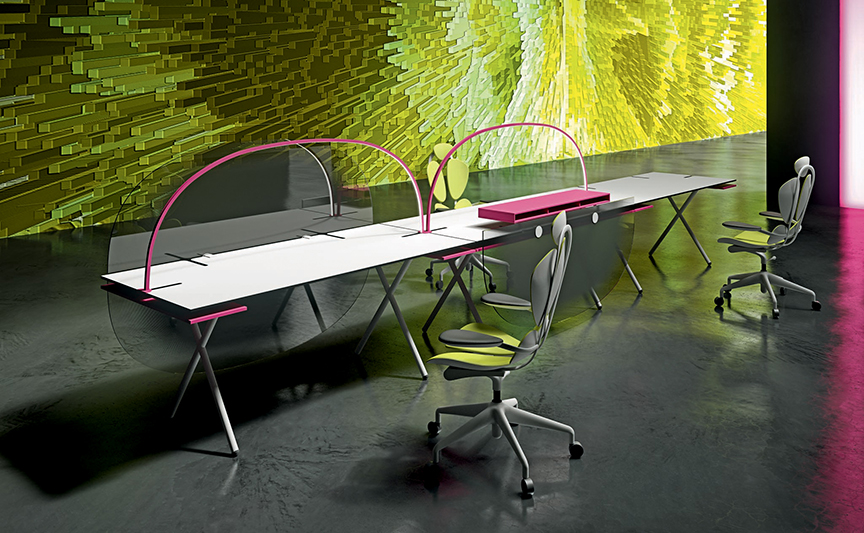
All photos courtesy Newform Ufficio.


